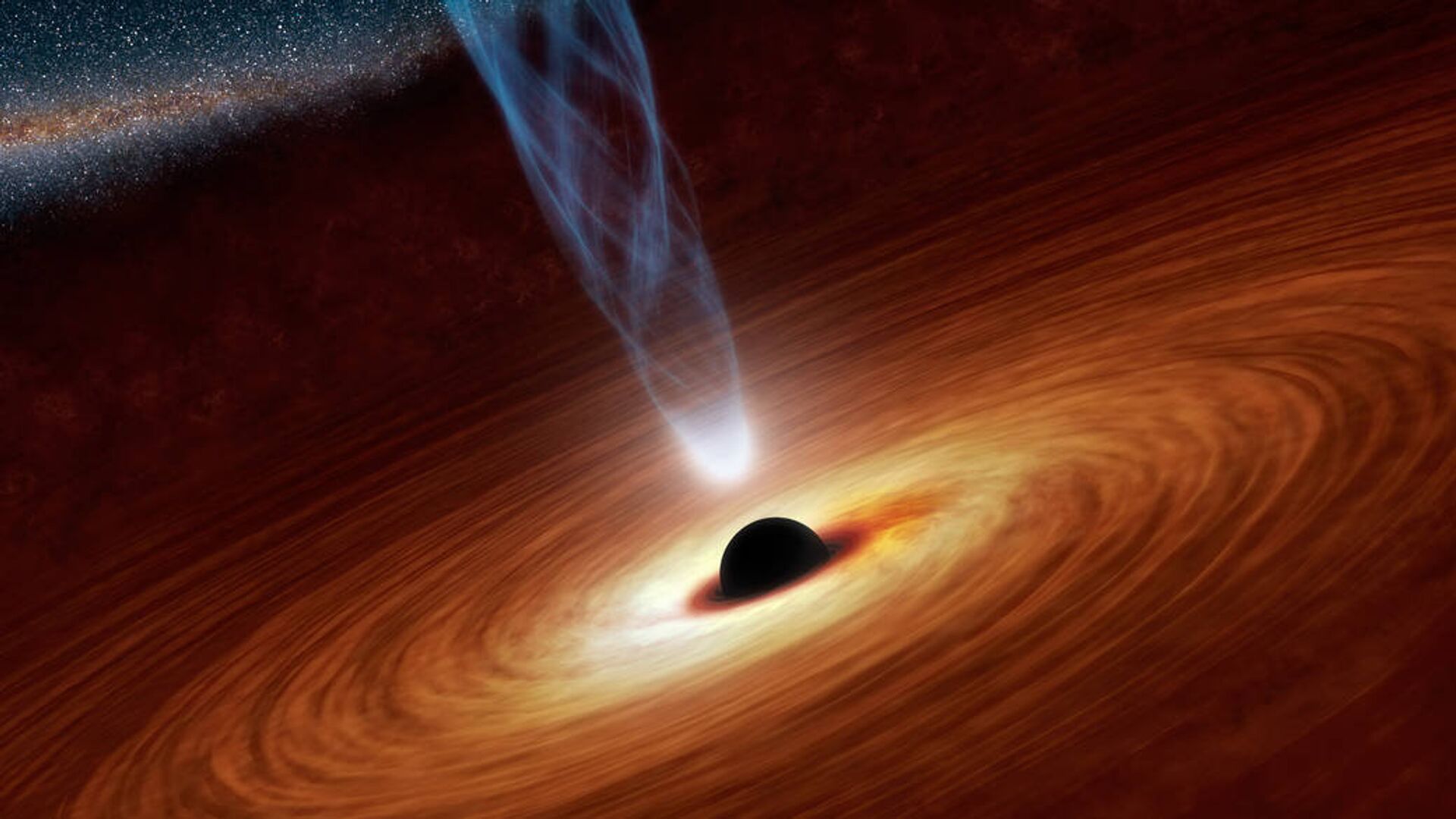https://sputnikglobe.com/20220302/cosmic-drama-two-black-holes-doomed-to-crash-in-way-that-will-shake-time-and-space-study-says-1093525947.html
Cosmic Drama: Two Black Holes Doomed to Crash in Way That Will 'Shake Time and Space', Study Says
Cosmic Drama: Two Black Holes Doomed to Crash in Way That Will 'Shake Time and Space', Study Says
Sputnik International
Two supermassive black holes are locked in what has been described by scientists as an "epic cosmic waltz 9 billion light years away" - a dance that is... 02.03.2022, Sputnik International
2022-03-02T16:50+0000
2022-03-02T16:50+0000
2023-04-12T16:57+0000
science & tech
black hole
space
https://cdn1.img.sputnikglobe.com/img/104476/90/1044769043_0:0:1041:586_1920x0_80_0_0_beb8758d5477da289be27a0a6d8f9fb3.jpg
In 10,000 years, "time and space" may be shaken up by the inevitable collision of two supermassive black holes locked together by space gravity, a new study led by scientists from the California Institute of Technology has suggested.The masses of the two black holes are hundreds of millions of times larger than that of our Sun, and the distance between them is currently estimated at roughly 50 times of that which separates our Sun and Pluto.The two black holes examined by the Caltech-led team are believed to be tightest-knit supermassive black hole duo yet observed. The pair was dubbed PKS 2131-021, and it is a quasar.The fact that the quasar - something that is known as an active galaxy core with a supermassive black hole siphoning material from a disk encircling it - contains two black holes orbiting within it sparked curiosity in the scientific team. The possibility of a quasar possessing two black holes had already been mulled by astronomers, but finding proof of such was difficult.Before PKS 2131-021, there was only one quasar that had been proven to possess a pair of supermassive black holes "caught in the act of merging", as the two bodies orbit each other in a "cosmic dance". This pair was detected in a quasar dubbed OJ 287, with its black holes circling every nine years, while it takes two years to complete an orbit for the duo spotted in PKS 2131-02.The new pair of supermassive black holes was detected due to scientists spotting periodic changes in the quasar's radio-light brightness. According to the scientists, citing radio data, they registered a perfect sinusoidal light curve - something that has never been observed in quasars before.According to the researchers, the new study provides a path to further detect similar supermassive black hole mergers - something that causes huge ripples across space and time.
Sputnik International
feedback@sputniknews.com
+74956456601
MIA „Rossiya Segodnya“
2022
News
en_EN
Sputnik International
feedback@sputniknews.com
+74956456601
MIA „Rossiya Segodnya“
Sputnik International
feedback@sputniknews.com
+74956456601
MIA „Rossiya Segodnya“
science & tech, black hole, space
science & tech, black hole, space
Cosmic Drama: Two Black Holes Doomed to Crash in Way That Will 'Shake Time and Space', Study Says
16:50 GMT 02.03.2022 (Updated: 16:57 GMT 12.04.2023) Two supermassive black holes are locked in what has been described by scientists as an "epic cosmic waltz 9 billion light years away" - a dance that is destined to end dramatically.
In 10,000 years, "time and space" may be shaken up by the inevitable collision of two supermassive black holes locked together by space gravity, a new
study led by scientists from the California Institute of Technology has suggested.
The masses of the two black holes are hundreds of millions of times larger than that of our Sun, and the distance between them is currently estimated at roughly 50 times of that which separates our Sun and Pluto.
"When the pair merge in roughly 10,000 years, the titanic collision is expected to shake space and time itself, sending gravitational waves across the universe", the California Institute of Technology said, describing the findings.
The two black holes examined by the Caltech-led team are believed to be tightest-knit supermassive black hole duo yet observed. The pair was dubbed PKS 2131-021, and it is a quasar.
The fact that the quasar - something that is known as an active galaxy core with a supermassive black hole siphoning material from a disk encircling it - contains two black holes orbiting within it sparked curiosity in the scientific team. The possibility of a quasar possessing two black holes had already been mulled by astronomers, but finding proof of such was difficult.
Before PKS 2131-021, there was only one quasar that had been proven to possess a pair of supermassive black holes "caught in the act of merging", as the two bodies orbit each other in a "cosmic dance". This pair was detected in a quasar dubbed
OJ 287, with its black holes circling every nine years, while it takes two years to complete an orbit for the duo spotted in PKS 2131-02.
The new pair of supermassive black holes was detected due to scientists spotting periodic changes in the quasar's radio-light brightness. According to the scientists, citing radio data, they registered a perfect sinusoidal light curve - something that has never been observed in quasars before.
"When we realized that the peaks and troughs of the light curve detected from recent times matched the peaks and troughs observed between 1975 and 1983, we knew something very special was going on", said Sandra O'Neill, lead author of the new study and an undergraduate student at Caltech.
According to the researchers, the new study provides a path to further detect similar supermassive black hole mergers - something that causes huge ripples across space and time.

